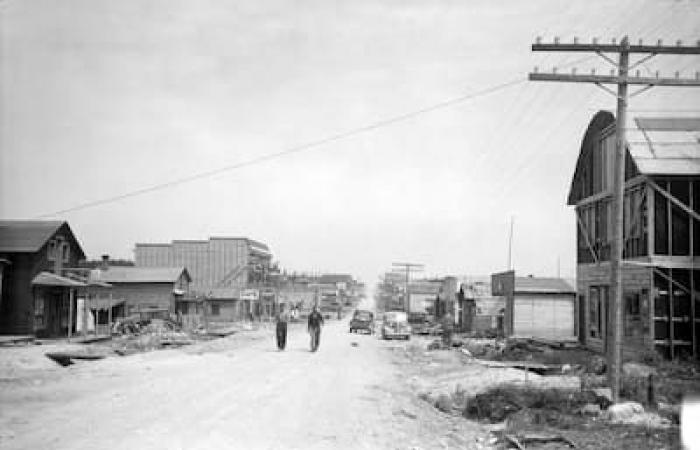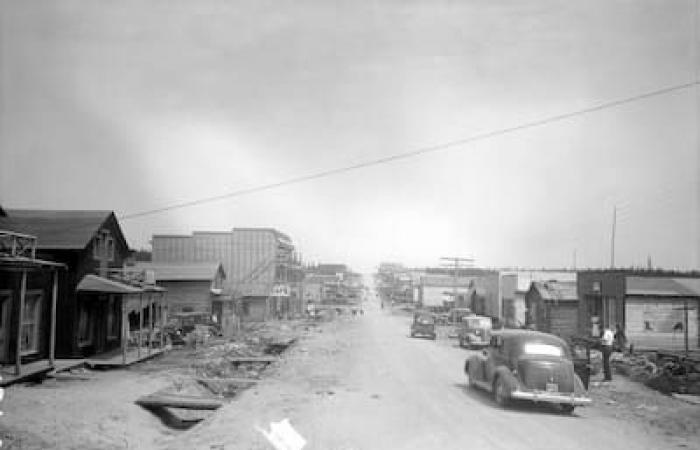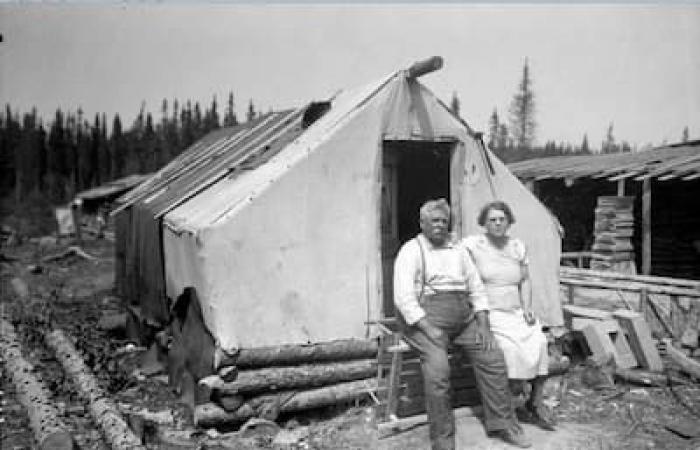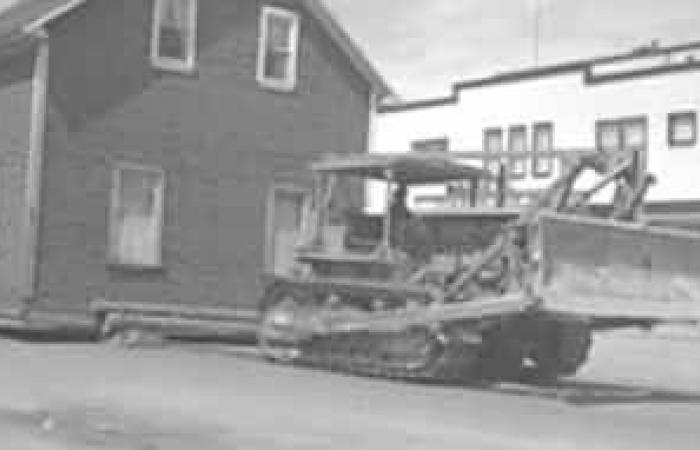At the end of the winter of 1935, Canadian Malartic Gold Mines built a large ore processing plant in Abitibi. The first workers came from all over Quebec, but also from Northeastern Ontario and Eastern Europe. They settle in a private village built by the mining company near its infrastructure.
Malartic is not a town like any other, the municipality is private. Thus, those who are not admitted are forced to settle elsewhere on Crown land. It is in this context that a small clandestine hamlet built illegally north of Malartic was established. This gathering of around forty houses will be officially called Roc-d’Or and unofficially Putainville or Paris-la-Nuit.
Roc-d’Or has had many names, including Paris Valley. Circa 1938.
Photo taken from the BAnQ, Rosemont-La-Petite-Patrie, Postcards, 3739750
View north from the southern end of Roc-d’Or. 1937.
Photo taken from BAnQ Rouyn-Noranda, Canadian National fund. 08Y,P213,P302
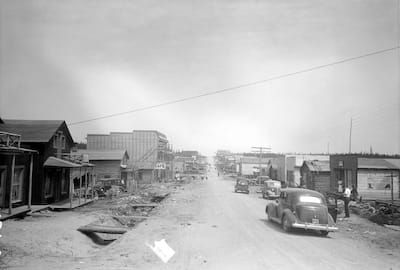
The southern end of the village of Roc-d’Or in 1937. In a report from the inspector of the Department of Mines in April 1936, it is indicated that 99% of the inhabitants of the 40 houses in the village are owners of illegal bars or engage in “white trafficking”, therefore prostitution.
Photo taken from the BAnQ, Ministry of Municipal Affairs and Regions funds

Words of Jacques Miquelon: “Customers go there [au bordel] as they go to the grocery store, the pharmacy or the bank and, except for devout souls, no one is scandalized.”
Photo taken from the BAnQ Québec, Ministry of Municipal Affairs and Regions funds
GOLD RUSH
The discovery of gold deposits in Abitibi at the turn of the First World War attracted prospectors and men seeking a better life in the north. These workers know Roc-d’Or well, a village without morals and without a permanent police force, an urban space where prostitution is at the heart of commercial activity and where alcohol orgies characterize the mood of the population.
This Quebec “Sodom and Gomorrah”, mainly made up of bars, brothels and gambling houses, appeared in 1936. Putainville beats to the rhythm of the arrival of new prostitutes at the station. The men come there to drink and when they are well rounded, they queue up to receive sexual services from young women in one of the village brothels. The demand is so strong that, on paydays, we had to bring girls from Montreal to lend a hand to the Roc-d’Or girls. In police reports from the time, we speak of chaos, violence, illegal establishments, but also of a completely heterogeneous population.
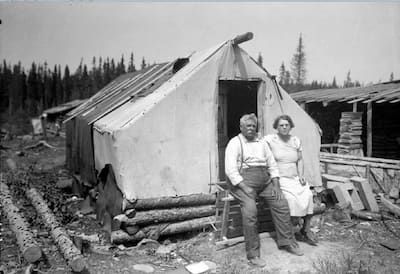
A couple of squatters in Roc-d’Or. 1937.
Photo taken from BAnQ Rouyn-Noranda, Canadian National fund. 08Y,P213,P301
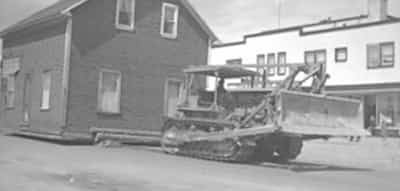
The demolition of Roc-d’Or. Disgusted by the widespread presence of prostitutes and debauchery, the priest Joseph-Albert Renaud, of the parish of Malartic, will use his influence to destroy the village.
Photo taken from the BAnQ Québec-Fonds ministry of Culture and Communications
Ephemeral village
Daily life in this open-air brothel is far from idyllic, living conditions seem difficult, resources limited, violence and conflicts too frequent.
In Putainville, it was not uncommon to see young girls of 12, 13 or 14 years old prostitute themselves for 50 cents. When they were arrested, they ended up in a reformatory for several years, but when these girls’ clients were caught, they almost always escaped without consequences. Furthermore, if many inhabitants of the village were marginalized, there were workers excluded from Malartic and trapped in this toxic environment.
The Putainville adventure was nevertheless short-lived. In 1943, the provincial government decided by decree to destroy the village. The last citizens left the unloved village in 1948.
The story of Putainville has become a legend, a memory of a bygone era. Today, there are no more houses left in the Putainville area.


